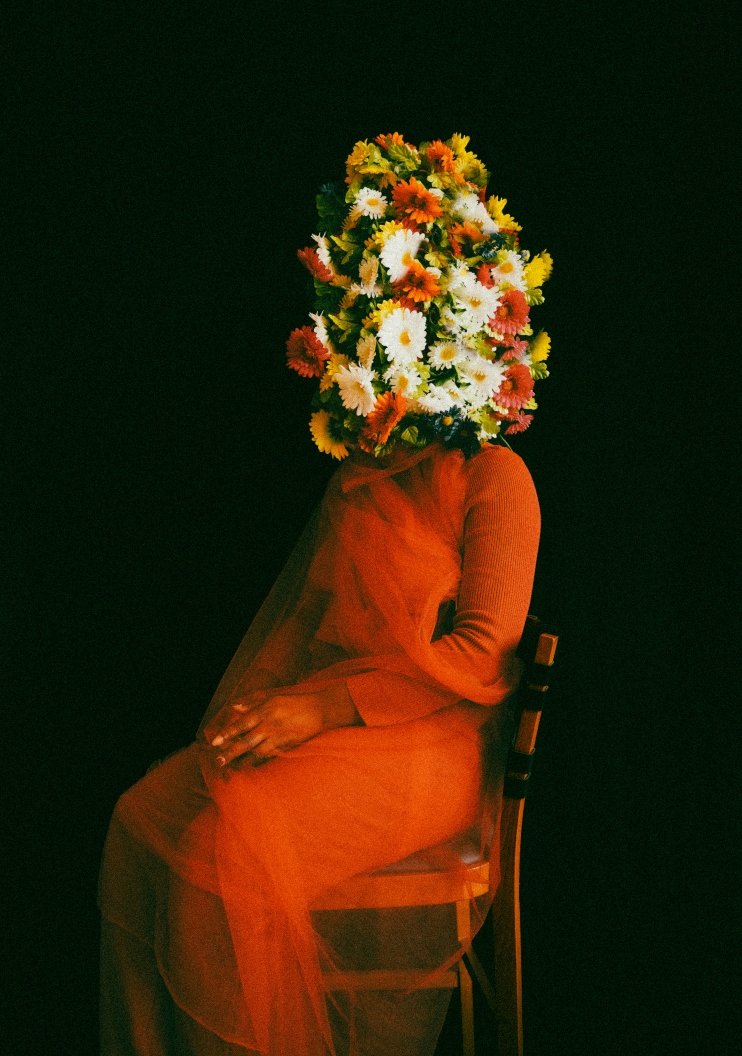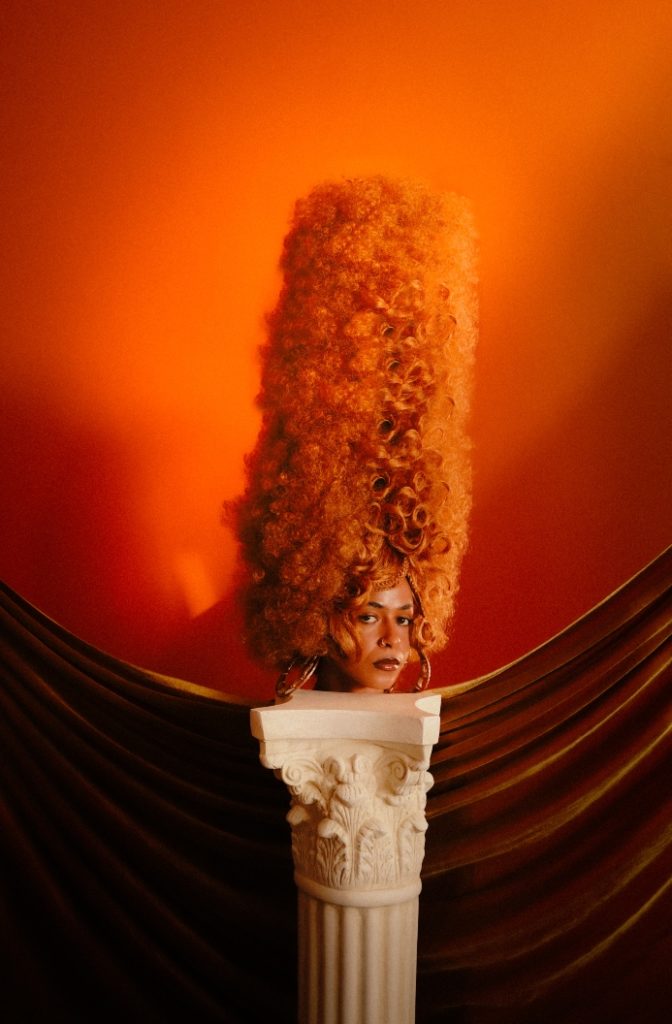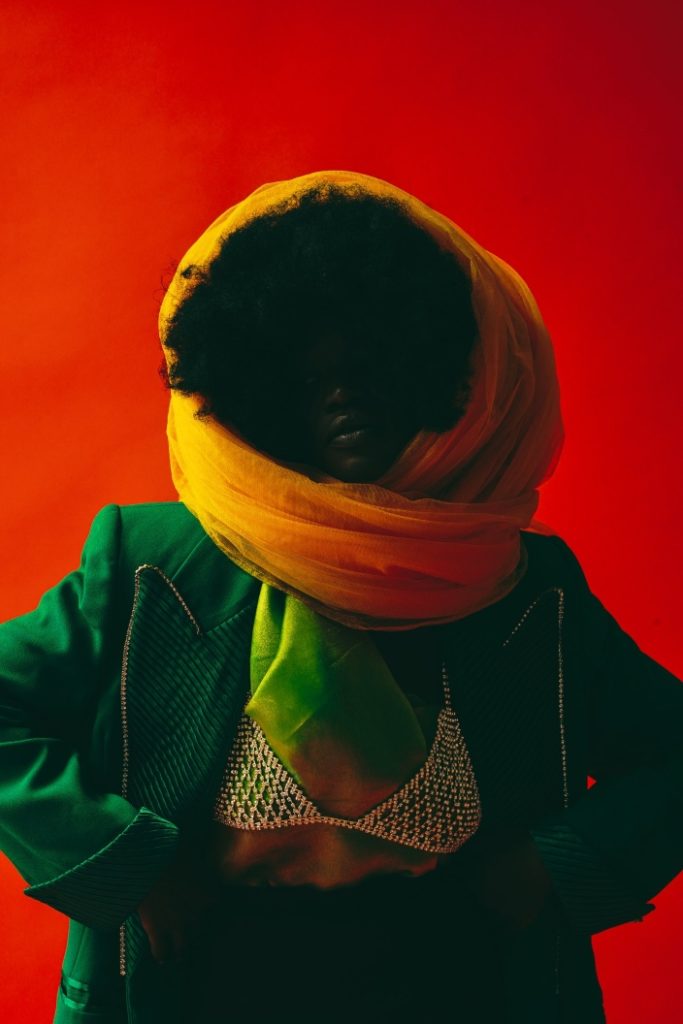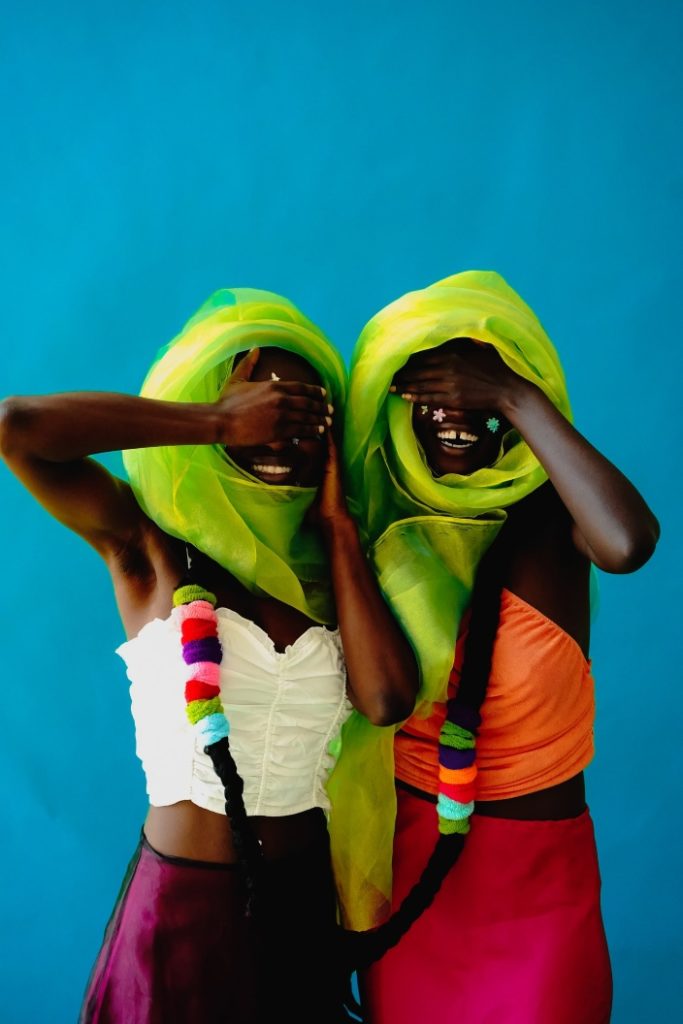Nigerian-American photographer and model Tumi Adeleye shreds perceived reality.

By Cy White, Photos courtesy of Tumi Adeleye
Tumi Adeleye is a storyteller. She creates entire universes with her work. She’s a speaker, someone who uses her voice to bring others into unfamiliar worlds. She brings to mind the work of Jordan Peele: enigmatic yet uncanny. Images that distort the reality that exists in your mind.
“I have an idea, I fall asleep and dream about it and literally wake up in the morning and take notes of what I’ve dreamt about,” she says. “The way my brain works is I have all these thoughts and dots. They’re all connected. It’s like beautiful chaos that’s helping me function. That’s my flavor.”
It is within these dreamscapes where Adeleye confronts very real and lived societal preconceived notions of what it means to be a Black woman in the world. With her photography, she shreds perceptions of Blackness and Black womanness. For instance, with her Portrait of a Mad Black Woman series, she asks the viewers to really consider and reevaluate their biases of Black women. Wrapping herself in lace and soft fabrics, enveloping her face in flowers, she challenges the “mad Black woman” trope, instead forcing viewers to peel back their belief that Black women of passion should be minimized to “negative” emotions, stripped of their humanity and denied the grace to simply exist.
“A lot of times when I interact with Black men, men in general, I feel the way I’m handled by them, it’s a little harsh,” Adeleye admits. “Even when it comes to my facial expressions, there’s an innocence that I’m not granted from the world. And it sucks. It’s a red flag when a guy calls a girl crazy to another girl. Portrait of a Mad Black Woman is from being called that in the past. When I go out into the world, oftentimes I feel like I have to be really careful with the things I say. The men I allowed to love me, I had to treat them with more care just so I could be treated in a neutral manner. It’s only with other women that I feel understood and feel seen.
“That’s why I use the flowers,” she continues. “The vibrancy represents how I see my mind and how I see other Black women’s minds. Very vibrant, very colorful, and oftentimes when you come across something that’s so striking, people don’t have the patience to just try and understand or do something as simple as listen. I really desire to be held and treated with fragileness, even though I know I am strong. That’s an element about flowers that I really appreciate. They’re very strong. They light up any room, any part of nature. At the same time, when you care for flowers, you want to be really careful; you want to make sure you’re watering them. I talk to my plants. That’s a feeling that’s very rare for me to feel outside of anyone else but Black women.”

Adeleye has made it her mission to shake the foundations of the art world, using her storytelling like a sledgehammer to demolish the gentrification of the space. An admitted introvert, her work is a form of activism, a means to push the boundaries of what many non-Black folx have decided Blackness really means. Her art demystifies the Black experience. Leaning into surrealist Afrofuturism, Adeleye offers depictions of Blackness that embrace every facet of what that means.
“My work centers around Black women, because they are my inspiration for everything. The fabrics that I grew up around, the sheets I use for sleeping, they were made from ankara,” she says. “It’s what people used for traditional clothing in Nigeria. I lived in an African household in Brooklyn and felt like I was living in Nigeria; then I moved to Nigeria, and that’s really what I was surrounded by. Africans are very, very, very proud. There’s a lot of pride in what they wear and even how they speak. The language, Yoruba, when I hear people speak it, it sounds like drums, especially when they’re very passionate about something. Growing up around that type of expression, it really influenced my choices.
“In my series Deeply Rooted, Afro Blues and even Pink Oil, those are all fabrics that I sourced from Lagos, Nigeria. I went to the markets and got all of those things, and I incorporated them in my photography because that’s what I know. That’s my reality. I’m really grateful for it. Even this simple sheet I did, Black Girl, Your Hair Is Alive, there’s a [feeling]of ‘I am here.’ Having pride in your presence on Earth and whatever you’re doing.”



Adeleye’s choice to use photography as her medium grew out of necessity, as so much of stumbling into one’s passion tends to do. Getting her start in UT’s advertising program, she was disillusioned by the prospect of applying to prestigious agencies and she switched gears. A photographer friend of hers introduced her to the world of modeling. She soon realized that so much of what she did on these photoshoots was creative direction, yet she was only ever perceived as “the talent.”
“I would style myself, put the mood board together, choose the location and put the set together,” she reveals. “I realized that a lot of models are more creative than I thought they were. A lot of models style themselves, they have styling businesses, but after the work is complete, people just see them as a model. That’s because oftentimes they’re just getting credited as a model. I was like, ‘Okay, I’m just gonna shoot it myself, use a self timer and do it.’”
Adeleye embraces her artistic merits, is her own muse and brings her dreams to life. In her work 4cCherry, a whimsical yet undeniably surreal depiction of what she calls her “badass alter ego,” we get a glimpse of Tumi Adeleye as she sees herself: the storyteller, telling her own story because no one can do it for her.

“If I’m going to do something and I’m curious about it, why not just go all the way? Who’s going to tell me that what I’m doing right now is not correct? It’s art. There is no right or wrong. That freedom is what I seek whenever I paint or whenever I do photography. It’s a space where no one can tell me what to do.”

